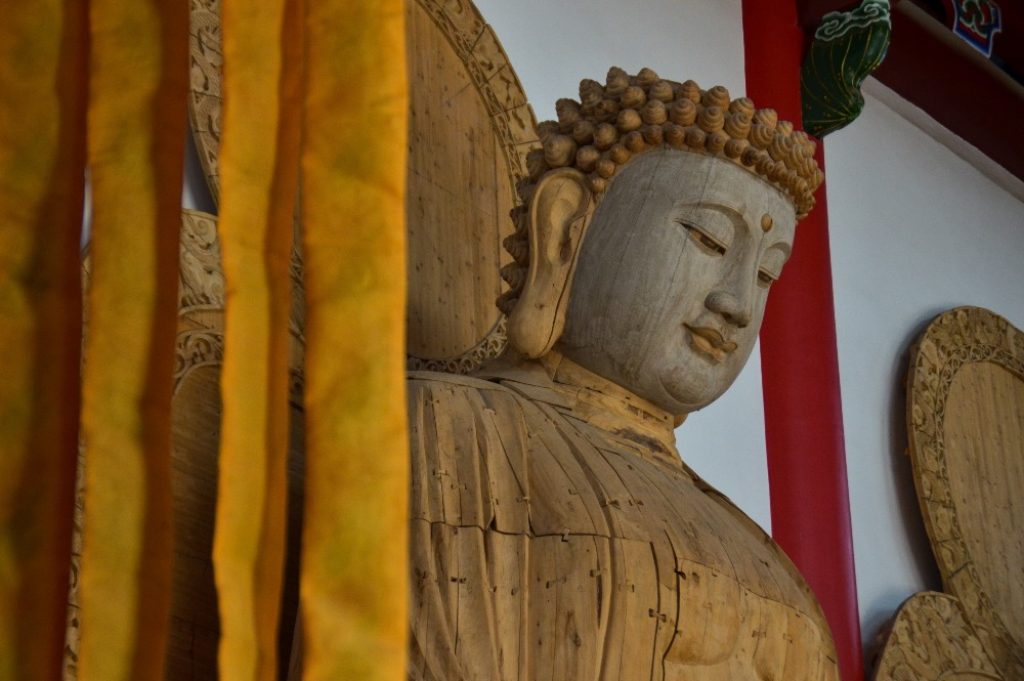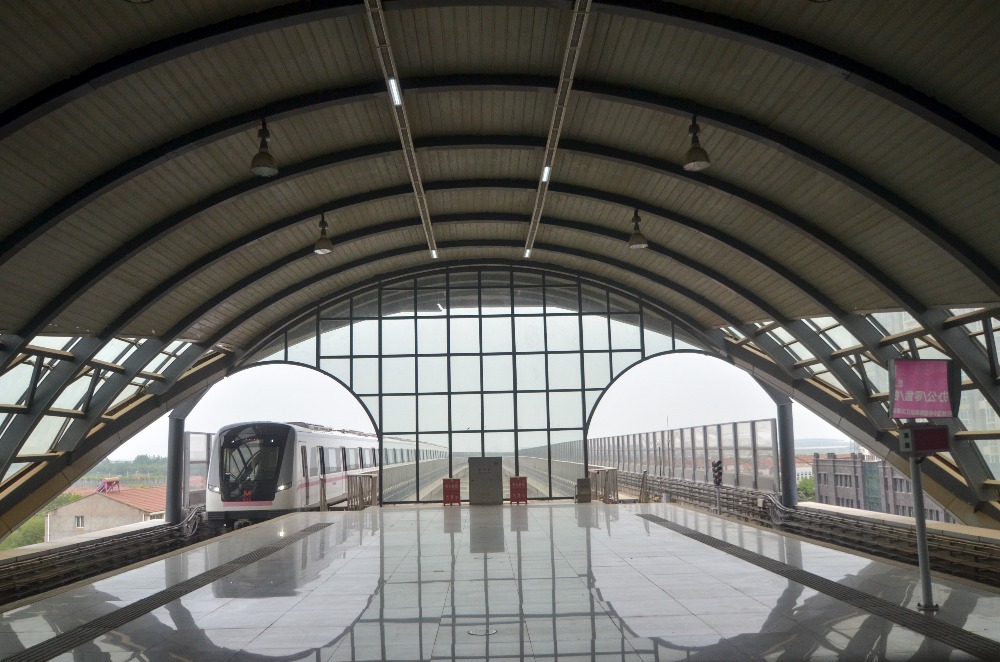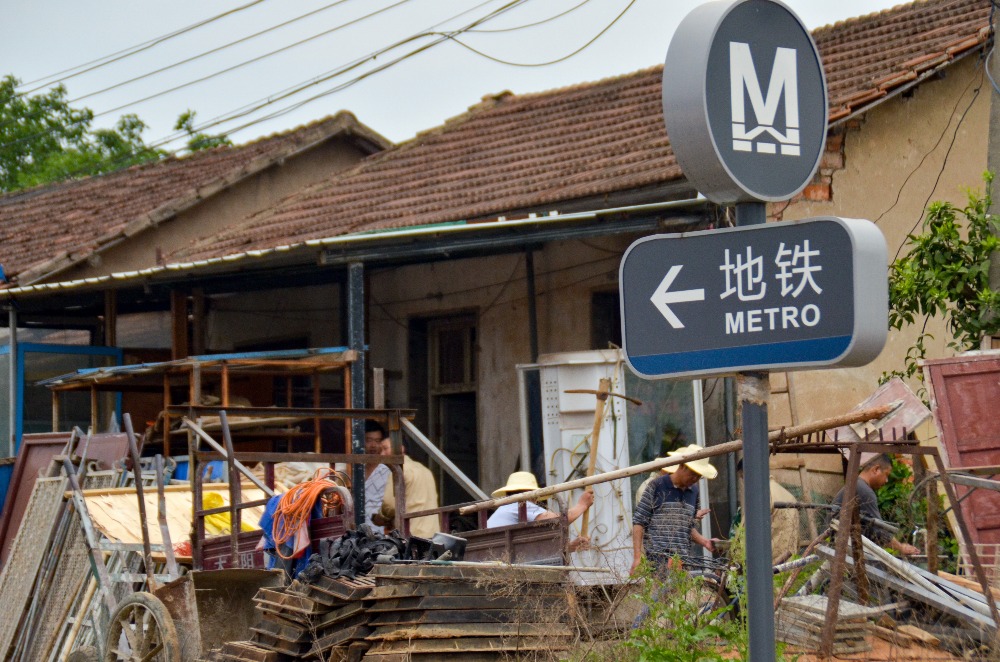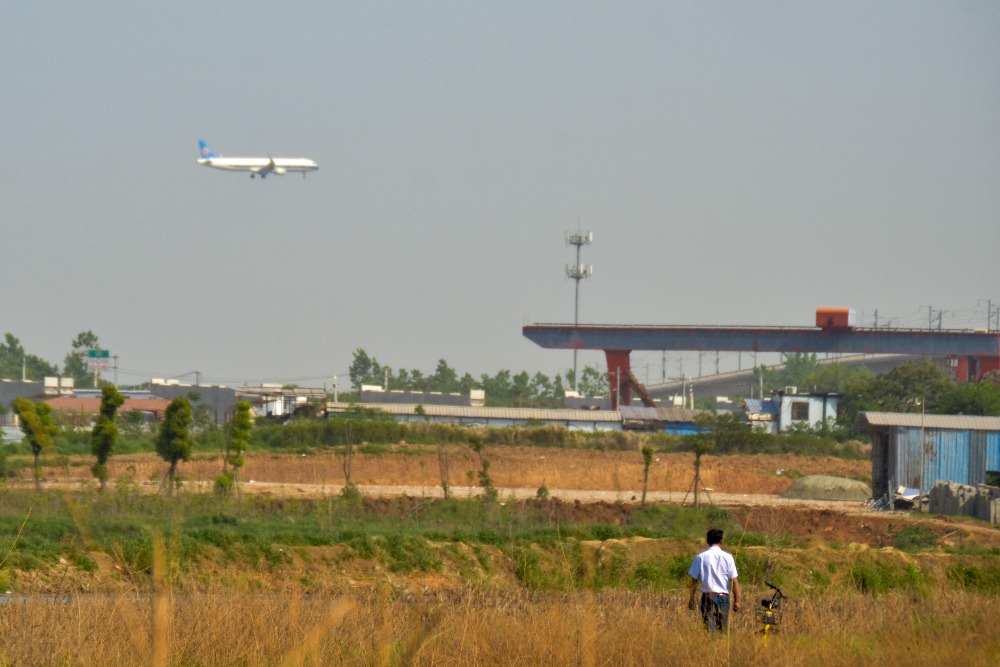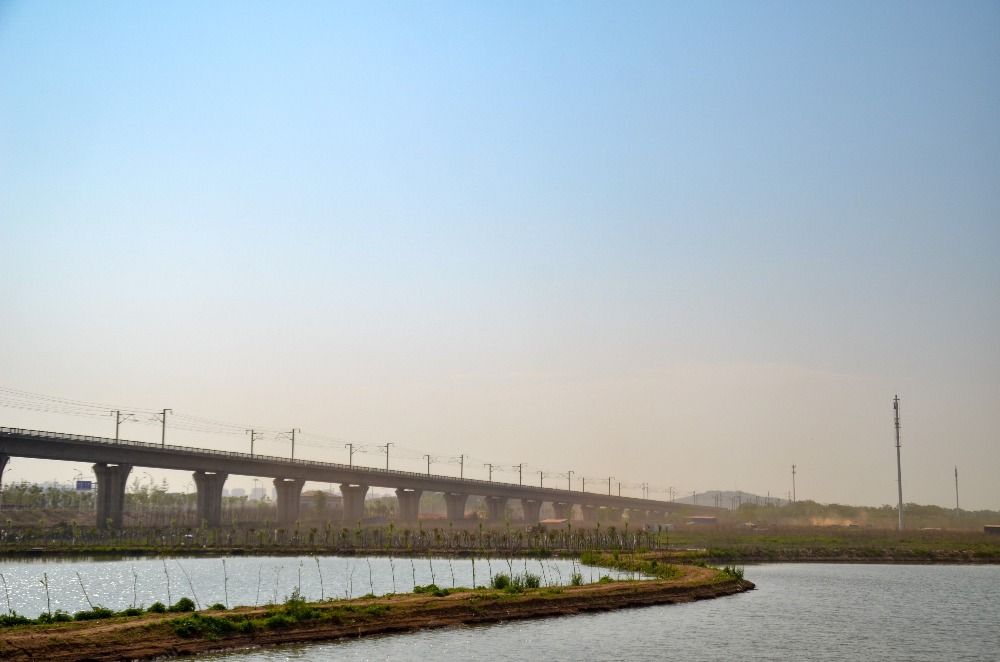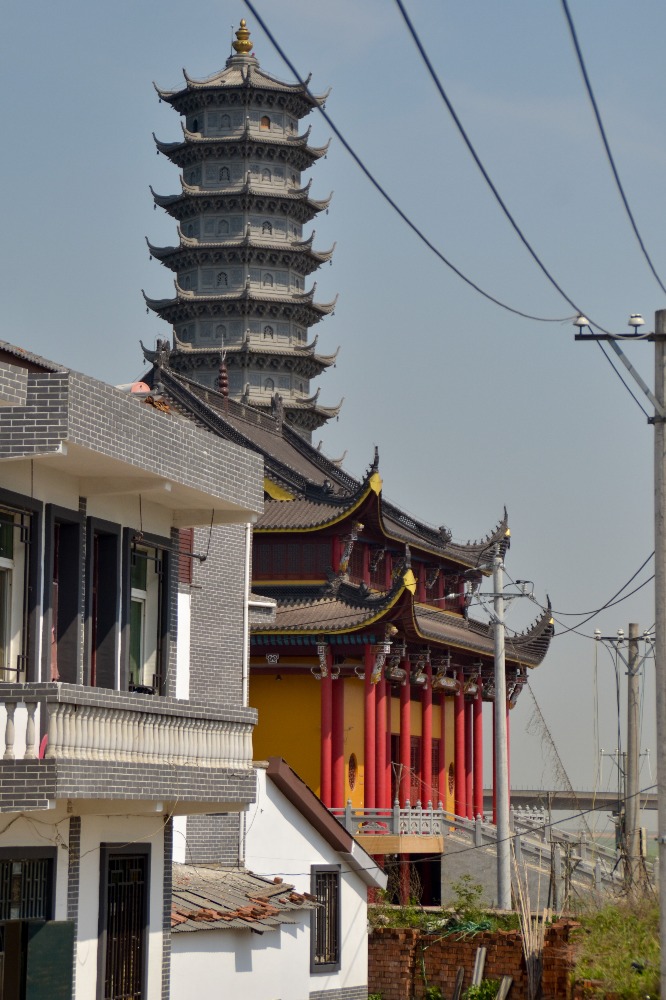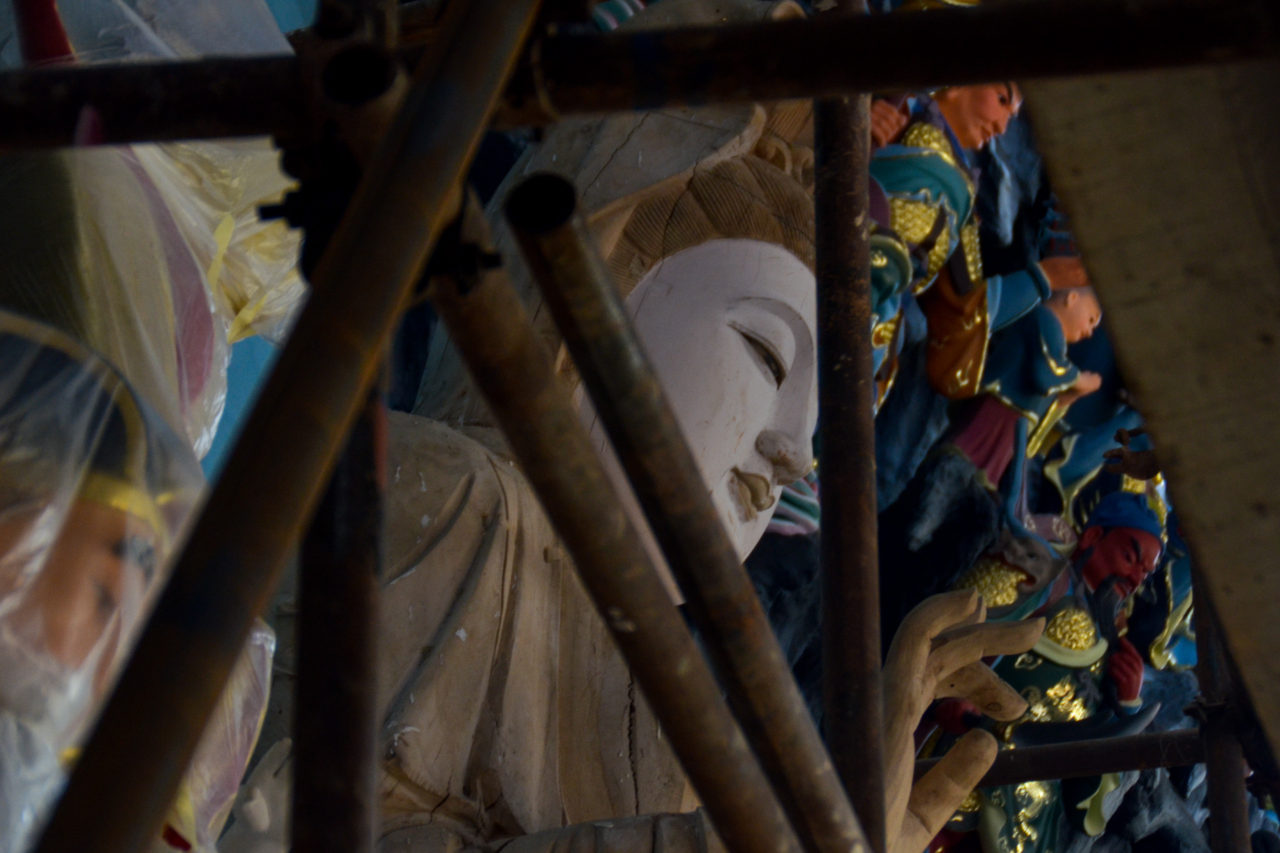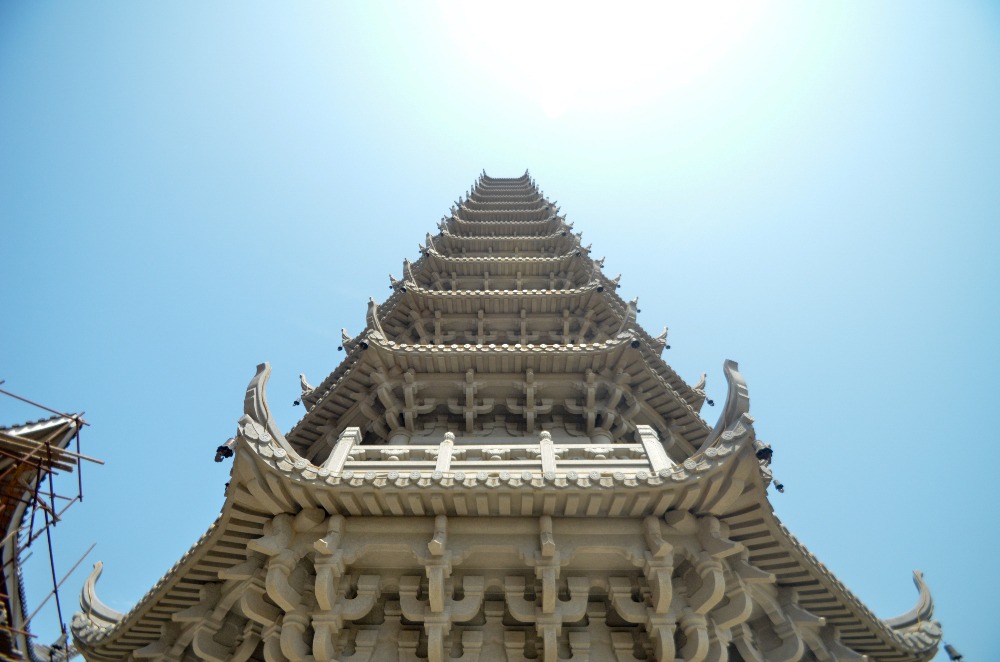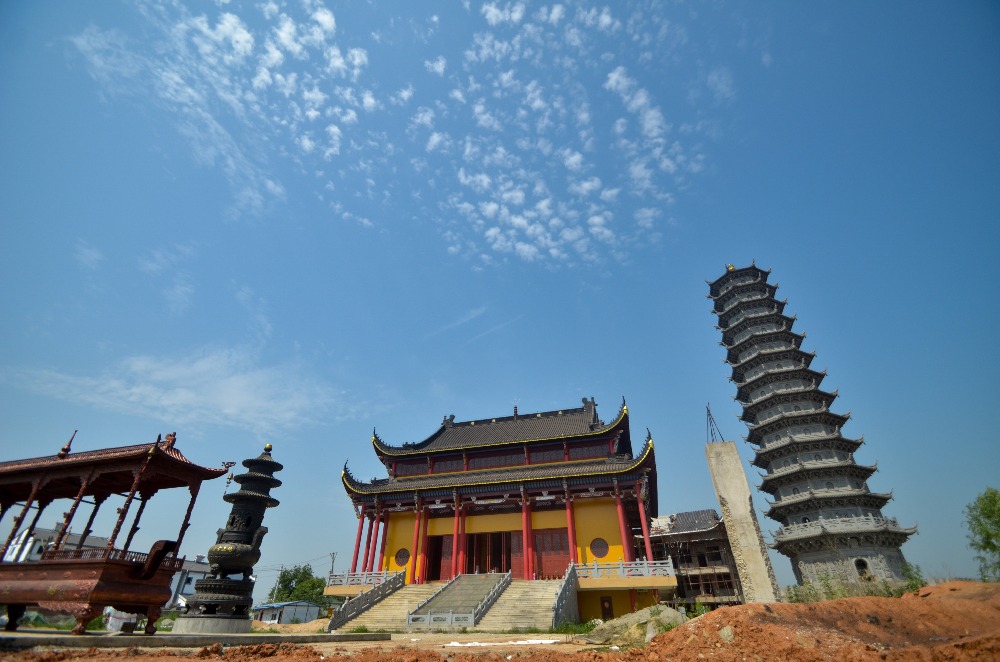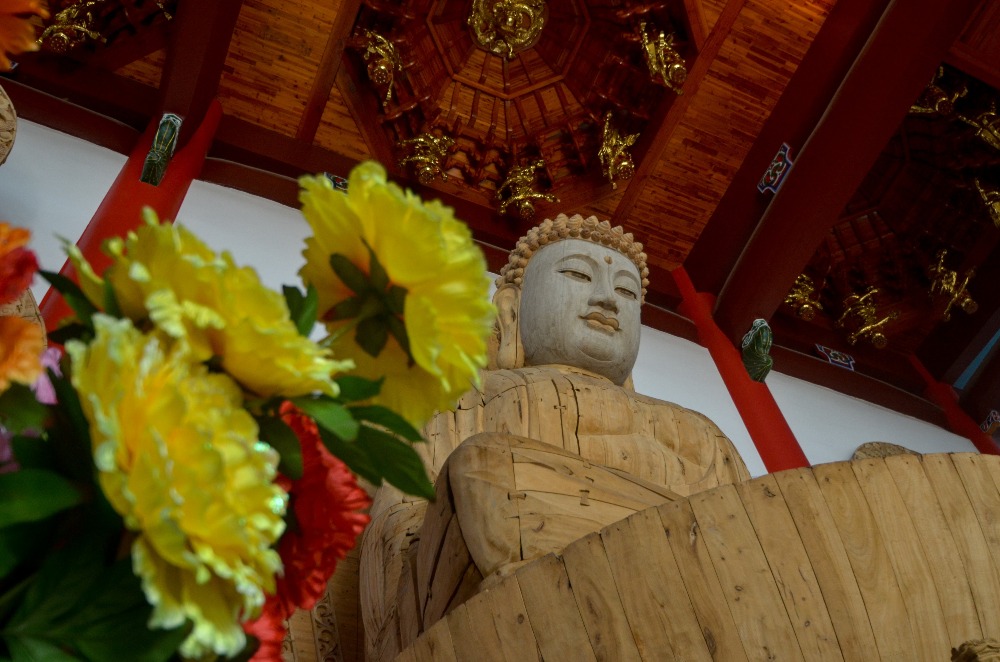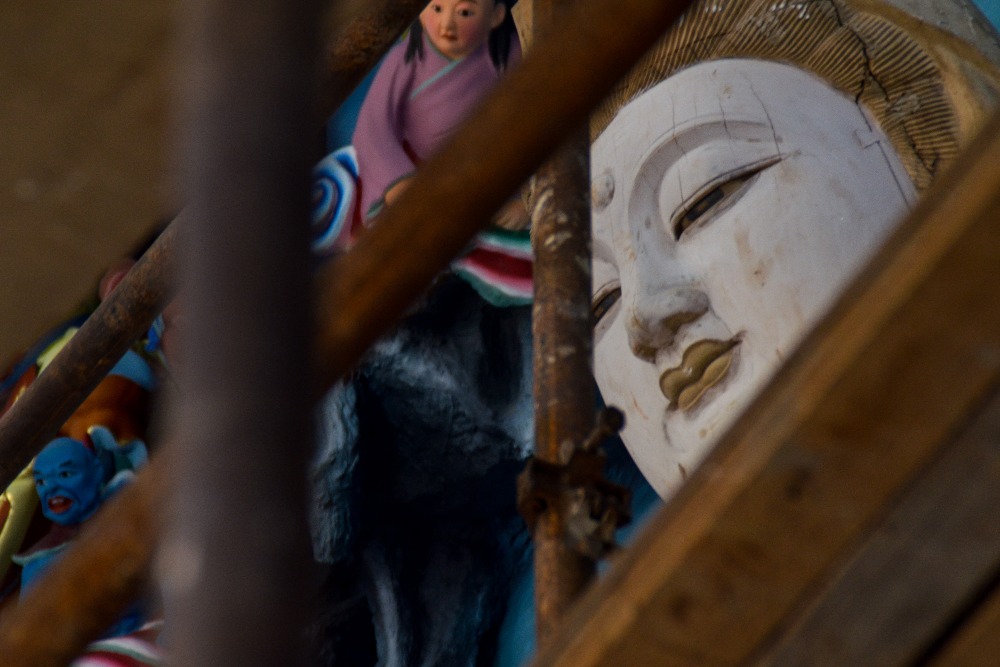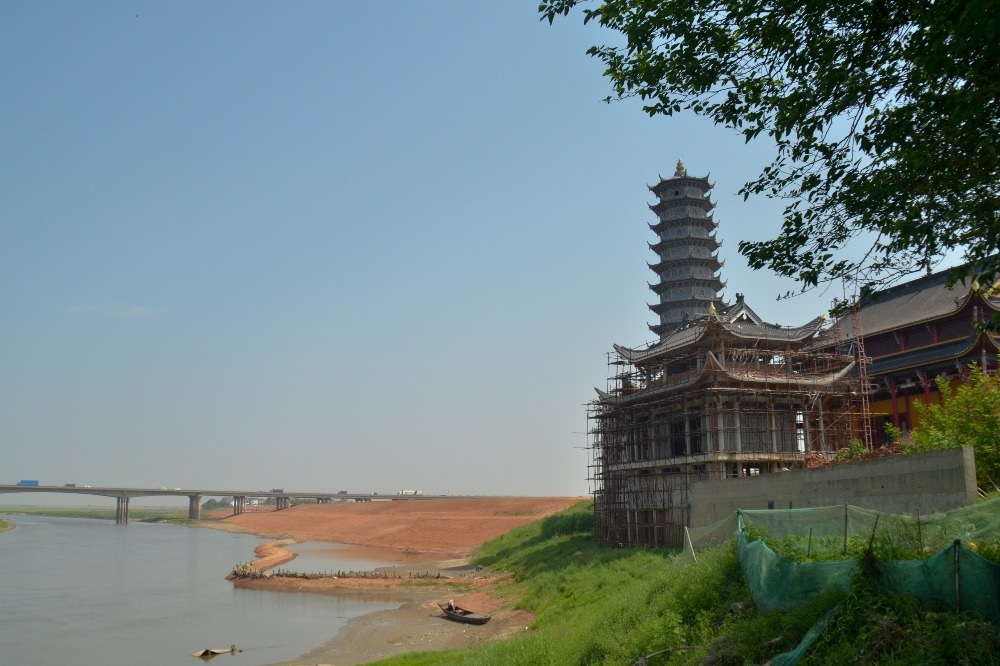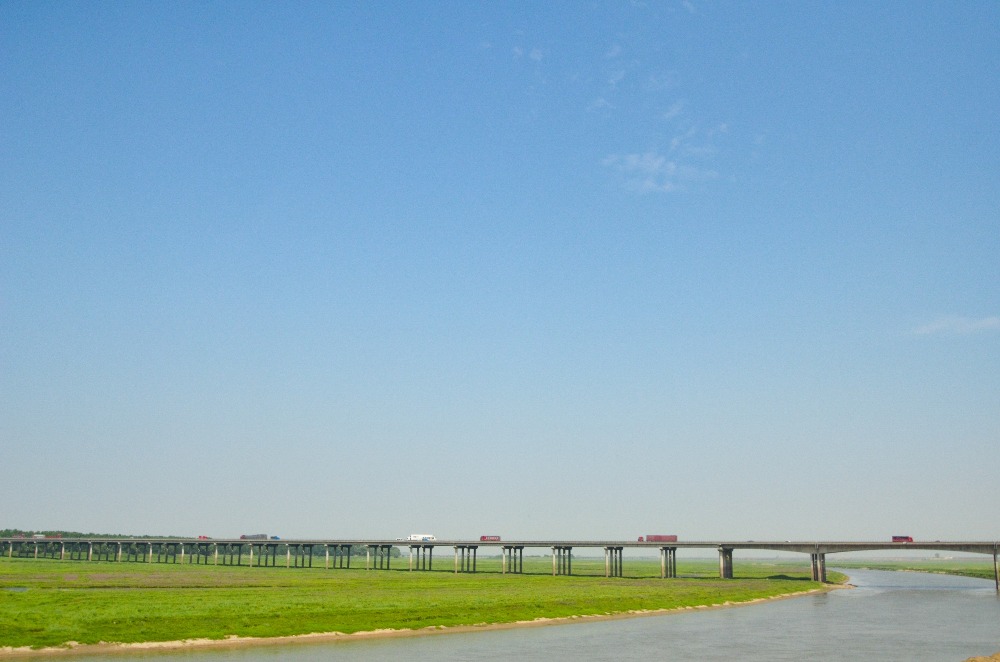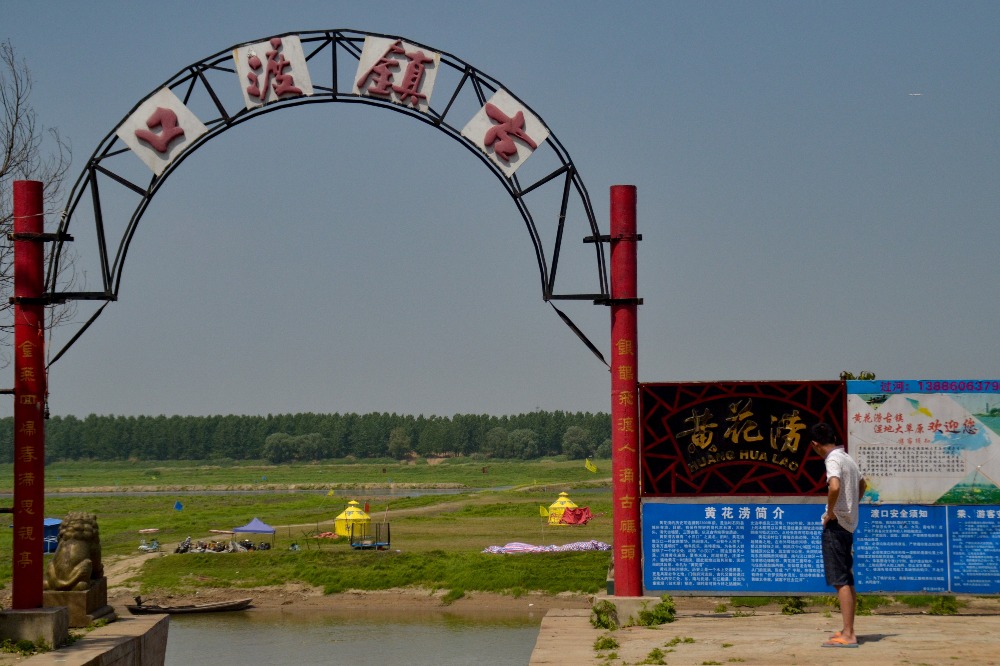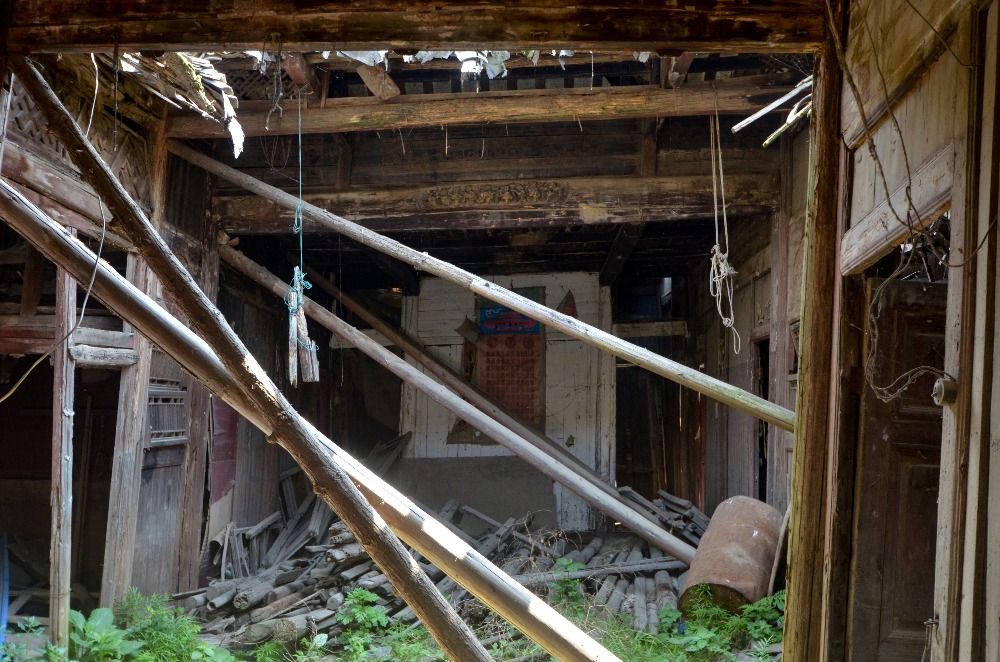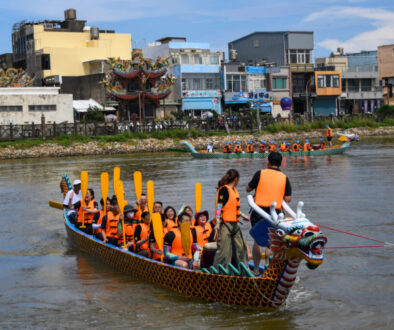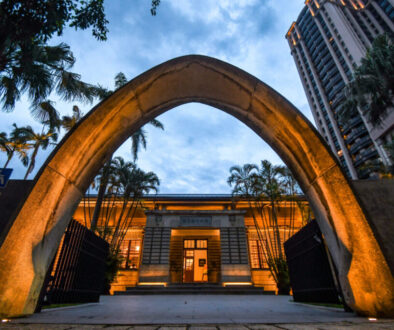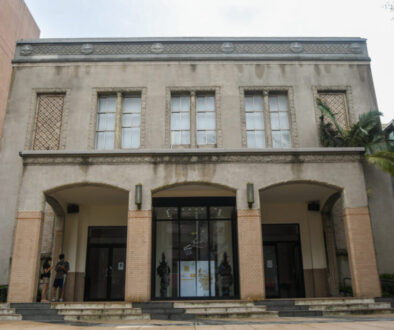What To Do In Wuhan: Huanghualao Ancient Village and Iron Buddha Temple 黄花涝与铁佛寺
Wuhan (武汉市) is a major city located in central China. Although large, both in land size and population, as well as being the provincial capital, travelers both domestic and international ask me, “What is there to do in Wuhan?” This is a question not easily answered. When using Google or Trip Advisor, it is difficult to find a listing of travel destinations to inspire you to take your next trip to Wuhan. It is my hope to convince you otherwise, and show you a bit of Wuhan off the beaten path.
An Unusual Sight
Whenever I go to the airport in Wuhan, I prefer to take the taxi. Of course, for a backpacker like myself it would be more economical to take the bus or metro, but like a child sitting in the back seat of his parents car, I have my nose pressed against the glass watching the city lights turn into the marshes and mist of the outskirts of Wuhan. In the midst of these grey drab wetlands is a single stone pagoda, shrouded in low laying clouds. I have always found it to be a most curious sight. In the middle of this vast wasteland stands a proud temple, poking its head up as if to peer on to the highway.
Other than going out to the airport (which is about 25 km from the CBD), there seems to be no reason for tourists to venture out this far from the conveniences and attractions within the city. But each time I was being shuttled to and from the airport this lonely pagoda stood and with each passing taxi ride my curiosity continued to grow. It being my last year in Wuhan, I forced myself to wake up at the crack of dawn and take the long trek to this mystery temple.
Venturing Off to the Unknown
The first leg of the trip, and the easiest, was taking the metro from my apartment in Wuchang up to 航空总部 (Hangkong Zongbu), the last station before the airport. From the metro you can look out over the empty bleak outskirts of Wuhan. From this vantage point over the marshes, construction sites, highways, and hills was the top of my pagoda peering through the smog. With little information online, and not even a name to go off of, I simply took off in the direction of the temple.
My first step off of the steps from the recently completed metro line, landed me in an orange soup of mud. With the metro line over head, many small noddle shops have taken refuge underneath the overpass, serving the street cleaners, construction workers, and other laborers their breakfast. The road leading towards my pagoda was a newly paved, empty road that went on for a few miles. On either side of the street were rusty trailers and other various make shift housing vagrants have set up to buy scrap metal. Other than these junk yards, this district consisted mainly of empty city blocks with a few buildings scattered among the mounds of dirt , architectural speaking these few buildings were quite unique, but were devoid of any life what so ever. I continued down this long stretch of concrete until I reached my first obstacle, the marsh. As if defining a border, another bullet train overpass lay overhead, marking the line between the wetlands and the network of vacant lots which I just passed through.
I made my way through the tall weeds and dead grass to the banks of the pond. Several elderly men squatted by the water with their over sized fishing rods cast into the lake. The banks of the pond winded in such a way that as I began to follow it I was taken backwards to the columns of the over pass. A was met with a high chain link fense stopping me from attempting to find another way around the water. Fortunately, other people seemed to have ran into the same problem and dug a hole under the wire fence. I laid with my back on the dried mud and hoisted myself to the other side of the barricade.
Finally I was able to find a path that would give me a more direct route to my destination, but yet again I was met with another challenge. Like the web of a spider, the airport has countless highways, railroads, and metro lines stretching out towards all corners of the country. Construction crews were laying the foundation for yet another line connecting the airport to the city. Dust and smoke were being kicked up into the air to the point I was gasping for breath trying to breathe. I approached three workers basking in the sun on a mound of dirt and asked which would be the best route to take to the temple. They directed me to go up through the construction site and follow a mud path which leads to the next highway. As I walked down this dirt road, I was constantly being barraged by endless convoys of dump trucks taking earth and rock down into a pit, which I inevitably had to cross though. Smacking the dirt and grime off of my clothes, I made it through the cloud of dust which hung over the construction site and arrived at the outskirts of my village.
At the Gates of Huanghualao Village
The first thing you notice when walking into this small isolated village is a large golden sign which reads:1000-year-old ancient village Huanghualao (千年古镇黄花涝) But for an “ancient village” all the buildings are brand new. Workers are busy smearing plaster on the walls and running electricity from building to building. In a typical Chinese fashion, they rebuild cultural relics rather than preserve them. The houses are roughly three stories tall with a stone siding to further create the illusion of an ancient village. This atmosphere of stepping back into the past is further embellished with the traditional curved terracotta roofs. The population of the village consisted mainly of old people (seeming to be waiting around for the inevitable) and construction workers, who more than likely are working for the same company as the ones who were working on the nearby highway. As I walked down the narrow streets, I could hear the old timers casually commenting on the uncommon presence of a foreigner. Their conversation faded as I continued through Huanghualao’s narrow alleyways with the pagoda perfectly in frame at the end of the street.
As you first approach the temple, it is clearly obvious that it is still under construction. A low concrete wall surrounds the temple with many wheel barrels and tools leaned up against it. I followed the wall for a few minutes till I finally found a small shabby gate that was being watched over by several constitution workers. who were resting in their temporary sheet metal living quarters. By the gate was a pillar with the dates of construction carved into its side. The temple was originally built in 1381, but was destroyed in 1970. One can only speculate that it may have had something to do with the culture revolution. The reconstruction of the began in 2011. A spacious stone courtyard covered in a sheet of dust lay in front of the temple, with several construction workers busily operating a bulldozer on the opposite side of the complex. I could see them taken aback to see a tourist, let alone a foreign one. The building was composed of a main hall (housing the Buddha’s statue), a high stone pagoda to the left, and the monk’s living quarters at the back of the complex. A large river is situated at the rear of the temple which flows back towards Wuhan proper. The river continues out into the distance, fading with the green fields on either side of its banks.
The inside of the temple is practically the same of any other temple you could find in China. Three statues looking tranquilly into the distance, but contrary to the name “Iron Buddha Temple” the statues were made of wood (which I actually found to be more beautiful than the typical gold or iron platted figures). I continued around the inside of the hall, walking along the marble floor with 阿弥陀佛 (a Chinese Buddhist chant) playing in the background. Passing through the back door of the hall, I found a small bridge leading to the monk’s dormitories. Men were busy at work hoisting their wheel-barrels to the roof, laying down some finishing touches to the temple. As I was making my way through the empty concrete dorms, I peered out a back window which had a beautiful view of the stream. Endless green fields, clear blue water, and to my surprise I caught a glimpse of a small group of yurts on the opposite side of the river.
After spending another half hour inspecting the temple, I left to investigate the strange site of Mongolian tents on the opposite side of the bank. I ended up stumbling upon several locals and families sitting under a gazebo next to a large metal arch which lead down to the river. On the bridge of the arch was a sign which read: “Ancient Village Port”. I was approached by one of the men, who was clearly the one who was operating the ferry, if I would want to cross the river to ride horses. Like many things in China, the yurts on the other side of the river were nothing more than a fake ploy to bring in customers to ride horses and make money, so I refused the man. I then set back on the long trek back to the metro station, but not before passing by some of the authentic traditional architecture of Huanghualao. Even with a collapsed roof, these wooden structures still stood beautifully decorated with hand carvings made directly into the beams of the house. The new buildings, while much more sturdy and comfortable, do not truly embody the culture and spirit of ancient China. There are now only a few wooden, original houses scattered among the village. The warmth of these once proud homes have been transformed into merely a ghostly shell of what it once was. I hope that the local government will to measures to ensure that these buildings will be preserved, and does not meet the same fate as the rest of the city.
Should I Go To Huanghualao?
Overall, getting to Huanghualao is a bit of a daunting task. Due to their being no public transportation or proper roads, even going by car can be a bit of a hassle. But, if you are looking for something new and a place off the beaten track, this is the place to go. It is obvious that they are trying to make this village into a big tourist destination in the future. There are already many convenient stores and restaurants opened by locals awaiting the future influx of tourists. But, that may still be a ways off. The Iron Buddha Temple in itself is enough reason to venture off this far. It is a gorgeous complex surrounded by nature which you can not find elsewhere in Wuhan, giving you the feeling of solitude and peace.

